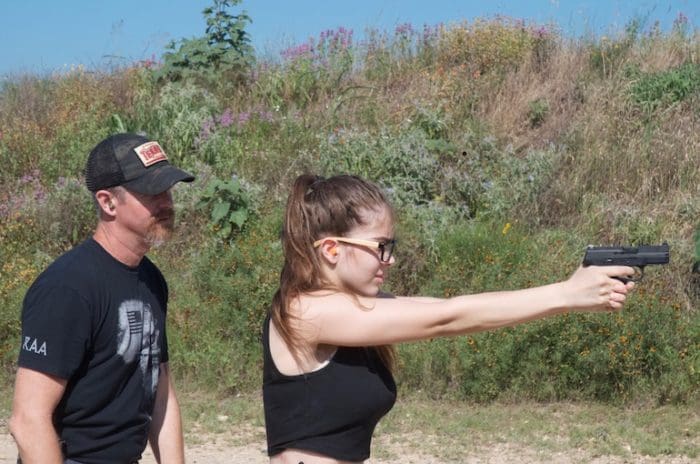Fear is important to our survival. We wouldn’t be here today if our species hadn’t developed a fear response that allowed humans to survive a wide range of threats. Threats we continue to face. Threats you face during firearms training? Maybe so.
Fear is Normal
New students taking a shooting class are often frightened. Some are scared because they’re holding a [potentially] deadly weapon. What if I screw up and shoot myself? What if I screw up and shoot someone else? Equally, some are afraid another student will violate a safety rule and injure them.
That kind of fear is a close cousin to the fear generated by performance anxiety. Screwing up with a gun might not be injurious, but it could be embarrassing. Loss of face or social status is a deep-seated concern for a lot of people.
Both of those types of fear are normal and natural. Both of those fears tend to dissipate once a student realizes that the head instructor is a professional who puts students’ safety first. Someone who encourages students of all skill levels with patience and positive reinforcement.
[Note: if your instructor or instructors don’t meet that standard, if you feel your safety is compromised, act on your rational fear and remove yourself from the class.]
The student gradually realizes they aren’t going to die, kill anyone and/or make a fool of themselves.
Gauge your fear, relax your breathing
Fear comes in various intensities, from “mild anxiety” to a full-on “panic attack” — which is nothing more than a normal fight, flight or freeze response to stimulus that isn’t dangerous.
If you’re experiencing mild anxiety before or during a class, again, it will ease over time. And if it doesn’t, well, a small amount of fear can help keep you sharp. As long as you can concentrate and perform the required tasks safely, it’s really a question of feeling the fear and doing it anyway.
If, however, you’re experiencing a fight, flight or freeze response before or during a firearms training class, you’ll experience a number of [literally] alarming physical reactions: rapid, shallow breathing; rapid heartbeat, dilated pupils, trembling, crying, an inability to concentrate, tunnel vision and more.
First, recognize that all of these “symptoms” are designed to save your life. Rapid breathing oxygenates your body. A rapid heartbeat spreads the oxygen to the muscles. Adrenaline gives you strength. Crying alerts your pack to danger and recruits their aid, and so on.
The easiest way to combat an inappropriate survival response: focus your mind on your breathing and force yourself to breathe slowly. Control your breathing and your body will eventually get the message: stand down.
If your fight, flight or freeze symptoms don’t ease, take a break from the class, go someplace quiet, control your breathing and quiet your mind with positive thoughts. Take your time and don’t worry…everyone knows how you feel.
Understand your fear; explore it, embrace it, conquer it
Whether you’re anxious or downright scared before or during a firearms training class, ask yourself, what am I afraid of? Then don’t be afraid to ask the instructor to directly address your fear.
If you’re afraid the gun will jump out of your hands, ask the instructor, “How do I stop the gun from jumping out of my hand?” If you’re worried about shooting the gun by mistake, ask the instructor, “How do I stop myself from shooting the gun by mistake?”
It’s as simple as that, as long as you check your ego at the door. There are no stupid questions.
Don’t listen to anyone who tells you there’s nothing to be afraid of. In my experience, students who recognize their fears, put their ego aside and address their concerns with their instructor become competent and safe shooters.
Jeff Gonzales is a former US. Navy SEAL and preeminent weapons and tactics instructor. He brings his Naval Special Warfare mindset, operational success and lessons learned to the world at large. He is the president of Trident Concepts in Austin, Texas.
